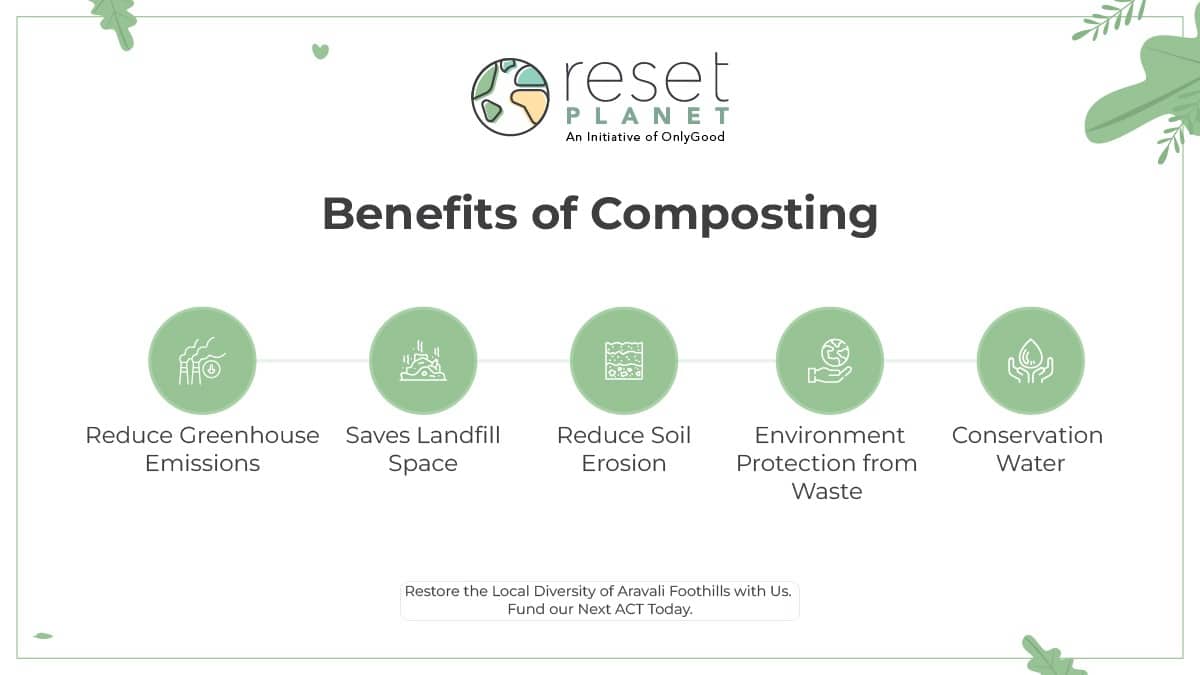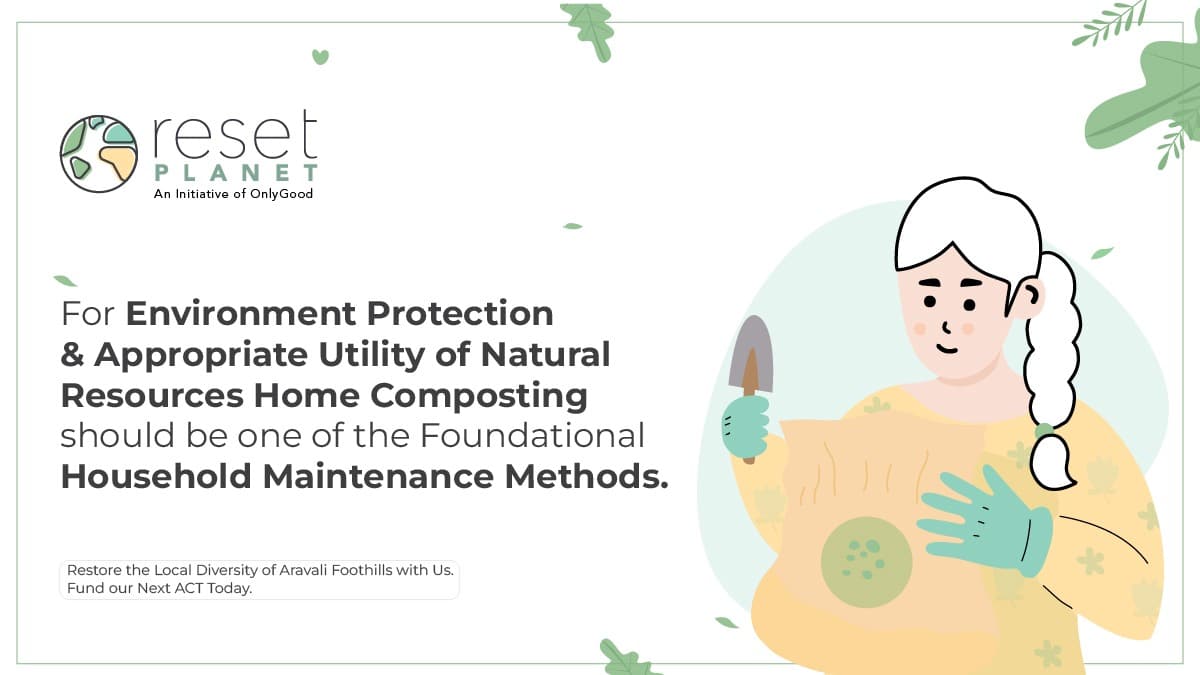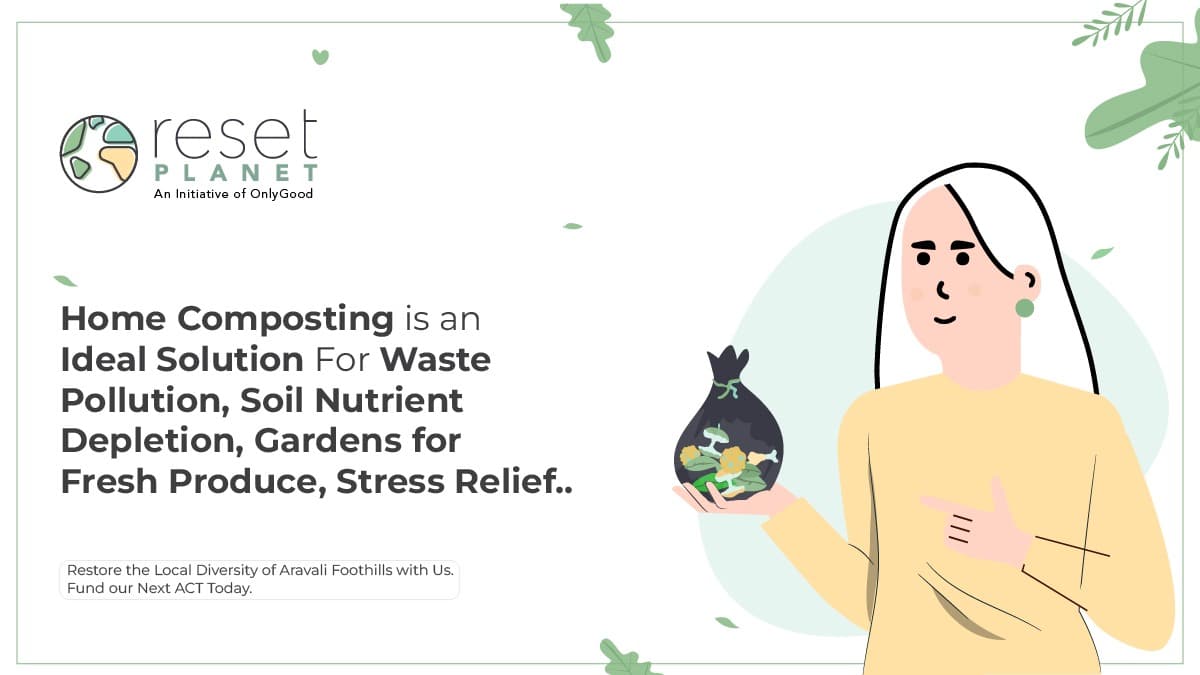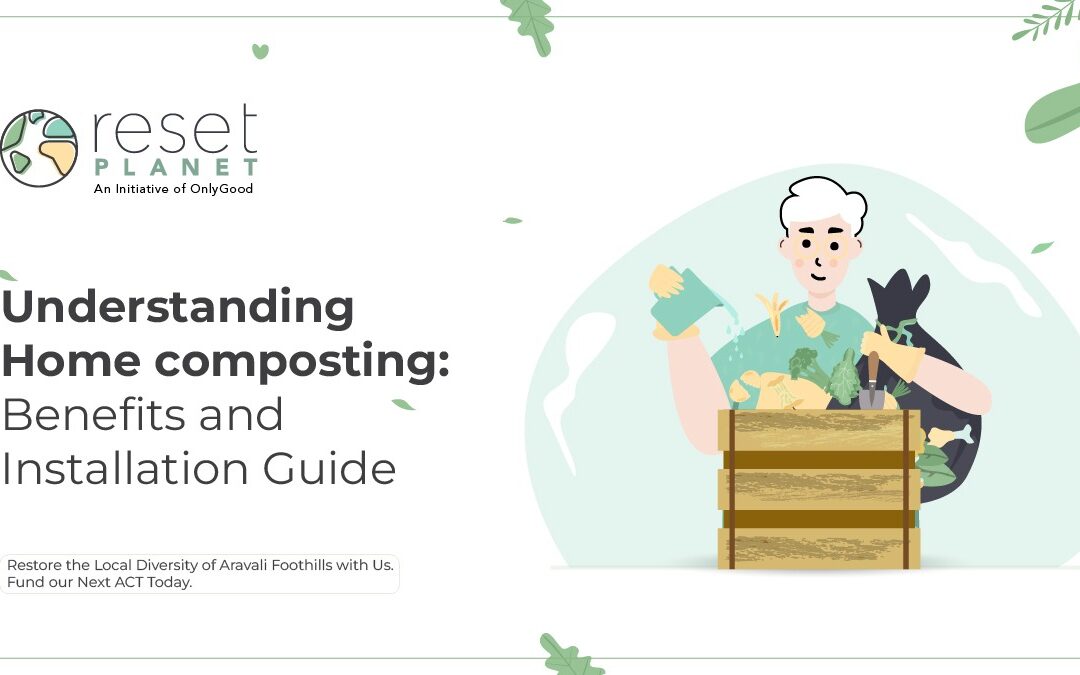Home composting is an effective way to reduce your toxic garbage or carbon footprint which will lead to climate improvement. We can create organic fertilizers out of our waste to grow our plants organically and improve the quality of the landscape. Many food wastes can be composted at home like fruit & vegetable waste, grasses, dry leaves, and lawn clipping.
Home composting should be possible in an encased receptacle or tumbler, in an effectively made shelter, or utilizing a straightforward heap. The key is to mix your feedstocks to accomplish a harmony between carbon and nitrogen, keep things sodden but not immersed, and guarantee satisfactory oxygen somewhere down in the heap. The organisms will wrap up the rest of the work.
Many of us start worrying when it comes to composting by ourselves, but it’s a simple process and we don’t need to carry any expensive or inaccessible components. Nitrogen, carbon, water, and air are the only ingredients we need in the process of composting. Hot Composting (composting with a blend of oxygen and carbon), Slow Composting (composting by dumping organic waste and water simultaneously), and Vermicomposting (composting with the help of worms) are some of the composting methods.
Benefits of Composting
Composting is a natural way of turning our waste into healthy soil, addressing climate change and using it to protect our environment as well.

Reduce Greenhouse emissions
When food waste rots, it releases a toxic gas that causes greenhouse emissions. Composting leads to a reduction in the rot of organic wastes, assists with the creation of healthy soil, and avoids harmful gasses to provide sustainability in the environment.
Saves Landfill space
As we know, landfills are expensive as well as cause the drainage of natural assets. Composting is an effective way to reduce these costs effectively by using compost generated by recyclable garbage.
Sustainable agriculture
With the increasing demand for food, the use of chemical fertilizers in agriculture also increases and becomes common day by day. It not only affects the quality of the food items but also reduces the production quality of the agricultural land.
Reduce soil erosion
Compost further develops soil structure and advances air circulation. Solid soil doesn’t move amazed by the intensity and the sun. This keeps up with demands, waterway banks, and farmland. Erosion can make floods a lot more terrible and can make farmland quit delivering as many yields.

Protection of environment
Compost can smother plant illness, diminish bugs, and dispense with the requirement for chemical composts. If you can decrease the requirement for pesticides and herbicides, you make better plants, better-untamed life, and keep harmful synthetic compounds out of our waterways, streams, and drinking water.
Conserve water
The use of composting in agriculture assists soil with retaining water and maintaining its moisture. It helps in raising microbes in the soil which further helps in boosting productivity.
Healthy soil creation
Composting helps in increasing the fertility of the soil and keeps it protected from expected diseases. It helps in maintaining the overall health of the soil and reduces soil erosion as well.
Installation Guide of composting
After discussing a lot about composting, let’s have a look at the installation guide of composting that we can install in our homes and can contribute to climate protection.
Select food scraps
Firstly, select food scraps like fruits and vegetable waste. Potato peels, orange peels, eggshells, and coffee grounds are some of the components with which we can start our process of composting. Don’t consider non-biodegradable items like plastic bags, or aluminium cans as they don’t work for composting. To make a hot compost heap, it’s necessary to have enough materials that can make a heap of at least 3 feet.
Store these food scraps
After collecting waste materials, store them in a large container in which waste can be added at regular intervals. We can store the food scraps in cold temperatures like in the freezer to avoid odours and insects at home.

Pick a place to make your compost
Now in this step, we need to pick a place where composting can be done easily. It can be your backyard, huge containers, government parks, gardens and so on. We can give our food scraps to someone else to make compost. Some municipalities will pick up your food scraps from our home and make compost out of it.
Mix the compost
Mixing the compost is crucial for making better compost. We need to dump dry brown leaves at the bottom and green wet leaves at the top to make the compost in the best way.
Water and Aerate the compost well
After following all the necessary steps, it all comes to give proper water and provide proper air to compost as well. After a few days, it becomes ready to use in farming and horticulture production.

